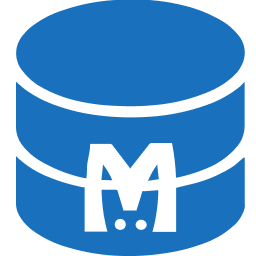You are looking at the documentation of a prior release. To read the documentation of the latest release, please
visit here.
New to KubeDB? Please start here.
KubeDB PostgreSQL - Continuous Archiving and Point-in-time Recovery
Here, will show you how to use KubeDB to provision a PostgreSQL to Archive continuously and Restore point-in-time.
Before You Begin
At first, you need to have a Kubernetes cluster, and the kubectl command-line tool must be configured to communicate with your cluster. If you do not already have a cluster, you can create one by using kind.
Now,install KubeDB operator in your cluster following the steps here.
To install KubeStash operator in your cluster following the steps here.
To install SideKick in your cluster following the steps here.
To install External-snapshotter in your cluster following the steps here.
To keep things isolated, this tutorial uses a separate namespace called demo throughout this tutorial.
$ kubectl create ns demo
namespace/demo created
Note: The yaml files used in this tutorial are stored in docs/guides/postgres/remote-replica/yamls folder in GitHub repository kubedb/docs.
continuous archiving
Continuous archiving involves making regular copies (or “archives”) of the PostgreSQL transaction log files.To ensure continuous archiving to a remote location we need prepare BackupStorage,RetentionPolicy,PostgresArchiver for the KubeDB Managed PostgreSQL Databases.
BackupStorage
BackupStorage is a CR provided by KubeStash that can manage storage from various providers like GCS, S3, and more.
apiVersion: storage.kubestash.com/v1alpha1
kind: BackupStorage
metadata:
name: linode-storage
namespace: demo
spec:
storage:
provider: s3
s3:
bucket: mehedi-pg-wal-g
endpoint: https://ap-south-1.linodeobjects.com
region: ap-south-1
prefix: backup
secretName: storage
usagePolicy:
allowedNamespaces:
from: All
default: true
deletionPolicy: WipeOut
$ kubectl apply -f backupstorage.yaml
backupstorage.storage.kubestash.com/linode-storage created
secrets for backup-storage
apiVersion: v1
kind: Secret
type: Opaque
metadata:
name: storage
namespace: demo
stringData:
AWS_ACCESS_KEY_ID: "*************26CX"
AWS_SECRET_ACCESS_KEY: "************jj3lp"
AWS_ENDPOINT: https://ap-south-1.linodeobjects.com
$ kubectl apply -f storage-secret.yaml
secret/storage created
Retention policy
RetentionPolicy is a CR provided by KubeStash that allows you to set how long you’d like to retain the backup data.
apiVersion: storage.kubestash.com/v1alpha1
kind: RetentionPolicy
metadata:
name: postgres-retention-policy
namespace: demo
spec:
maxRetentionPeriod: "30d"
successfulSnapshots:
last: 100
failedSnapshots:
last: 2
$ kubectl apply -f https://github.com/kubedb/docs/raw/v2024.11.8-rc.0/docs/guides/postgres/pitr/yamls/retention-policy.yaml
retentionpolicy.storage.kubestash.com/postgres-retention-policy created
PostgreSQLArchiver
PostgreSQLArchiver is a CR provided by KubeDB for managing the archiving of MongoDB oplog files and performing volume-level backups
apiVersion: archiver.kubedb.com/v1alpha1
kind: PostgresArchiver
metadata:
name: postgresarchiver-sample
namespace: demo
spec:
pause: false
databases:
namespaces:
from: Selector
selector:
matchLabels:
kubernetes.io/metadata.name: demo
selector:
matchLabels:
archiver: "true"
retentionPolicy:
name: postgres-retention-policy
namespace: demo
encryptionSecret:
name: "encrypt-secret"
namespace: "demo"
fullBackup:
driver: "VolumeSnapshotter"
task:
params:
volumeSnapshotClassName: "longhorn-snapshot-vsc"
scheduler:
successfulJobsHistoryLimit: 1
failedJobsHistoryLimit: 1
schedule: "30 * * * *"
sessionHistoryLimit: 2
manifestBackup:
scheduler:
successfulJobsHistoryLimit: 1
failedJobsHistoryLimit: 1
schedule: "30 * * * *"
sessionHistoryLimit: 2
backupStorage:
ref:
name: "linode-storage"
namespace: "demo"
EncryptionSecret
apiVersion: v1
kind: Secret
type: Opaque
metadata:
name: encrypt-secret
namespace: demo
stringData:
RESTIC_PASSWORD: "changeit"
$ kubectl create -f https://github.com/kubedb/docs/raw/v2024.11.8-rc.0/docs/guides/postgres/pirt/yamls/postgresarchiver.yaml
postgresarchiver.archiver.kubedb.com/postgresarchiver-sample created
$ kubectl create -f https://github.com/kubedb/docs/raw/v2024.11.8-rc.0/docs/guides/postgres/pirt/yamls/encryptionSecret.yaml
Ensure volumeSnapshotClass
$ kubectl get volumesnapshotclasses
NAME DRIVER DELETIONPOLICY AGE
longhorn-snapshot-vsc driver.longhorn.io Delete 7d22h
If not any, try using longhorn or any other volumeSnapshotClass.
kind: VolumeSnapshotClass
apiVersion: snapshot.storage.k8s.io/v1
metadata:
name: longhorn-snapshot-vsc
driver: driver.longhorn.io
deletionPolicy: Delete
parameters:
type: snap
$ helm install longhorn longhorn/longhorn --namespace longhorn-system --create-namespace
$ kubectl apply -f volumesnapshotclass.yaml
volumesnapshotclass.snapshot.storage.k8s.io/longhorn-snapshot-vsc unchanged
Deploy PostgreSQL
So far we are ready with setup for continuously archive PostgreSQL, We deploy a postgresql referring the PostgreSQL archiver object
apiVersion: kubedb.com/v1
kind: Postgres
metadata:
name: demo-pg
namespace: demo
labels:
archiver: "true"
spec:
version: "13.13"
replicas: 3
standbyMode: Hot
storageType: Durable
storage:
storageClassName: "longhorn"
accessModes:
- ReadWriteOnce
resources:
requests:
storage: 1Gi
archiver:
ref:
name: postgresarchiver-sample
namespace: demo
deletionPolicy: WipeOut
$ kubectl get pod -n demo
NAME READY STATUS RESTARTS AGE
demo-pg-0 2/2 Running 0 8m52s
demo-pg-1 2/2 Running 0 8m22s
demo-pg-2 2/2 Running 0 7m57s
demo-pg-backup-config-full-backup-1702388088-z4qbz 0/1 Completed 0 37s
demo-pg-backup-config-manifest-1702388088-hpx6m 0/1 Completed 0 37s
demo-pg-sidekick 1/1 Running 0 7m31s
demo-pg-sidekick is responsible for uploading wal-files
demo-pg-backup-config-full-backup-1702388088-z4qbz are the pod of volumes levels backups for postgreSQL.
demo-pg-backup-config-manifest-1702388088-hpx6m are the pod of the manifest backup related to PostgreSQL object
validate BackupConfiguration and VolumeSnapshots
$ kubectl get backupconfigurations -n demo
NAME PHASE PAUSED AGE
demo-pg-backup-config Ready 2m43s
$ kubectl get backupsession -n demo
NAME INVOKER-TYPE INVOKER-NAME PHASE DURATION AGE
demo-pg-backup-config-full-backup-1702388088 BackupConfiguration demo-pg-backup-config Succeeded 74s
demo-pg-backup-config-manifest-1702388088 BackupConfiguration demo-pg-backup-config Succeeded 74s
kubectl get volumesnapshots -n demo
NAME READYTOUSE SOURCEPVC SOURCESNAPSHOTCONTENT RESTORESIZE SNAPSHOTCLASS SNAPSHOTCONTENT CREATIONTIME AGE
demo-pg-1702388096 true data-demo-pg-1 1Gi longhorn-snapshot-vsc snapcontent-735e97ad-1dfa-4b70-b416-33f7270d792c 2m5s 2m5s
data insert and switch wal
After each and every wal switch the wal files will be uploaded to backup storage
$ kubectl exec -it -n demo demo-pg-0 -- bash
bash-5.1$ psql
postgres=# create database hi;
CREATE DATABASE
postgres=# \c hi
hi=# create table tab_1 (a int);
CREATE TABLE
hi=# insert into tab_1 values(generate_series(1,100));
INSERT 0 100
# we will restore here. till now we have 100 rows
hi=# select now();
2023-12-12 13:43:41.300216+00
# This insert is necessary unless postgres will wait
# for data to be available at `2023-12-12 13:43:41.300216+00`
# regardless of our switch wal operation
hi=# insert into tab_1 values(generate_series(1,100));
INSERT 0 100
# switching wall so that this wal is available when we restore
# in general this will be archived when either of them occurs
# - archive_timeout passed
# - wal file gets full by wal record
hi=# select pg_switch_wal();
0/6013240
hi=# select count(*) from tab_1 ;
200
At this point We have 200 rows in our newly created table
tab_1on databasehi
Point-in-time Recovery
Point-In-Time Recovery allows you to restore a PostgreSQL database to a specific point in time using the archived transaction logs. This is particularly useful in scenarios where you need to recover to a state just before a specific error or data corruption occurred. Let’s say accidentally our dba drops the the table tab_1 and we want to restore.
$ kubectl exec -it -n demo demo-pg-0 -- bash
bash-5.1$ psql
postgres=# \c hi
hi=# drop table tab_1;
DROP TABLE
hi=# select count(*) from tab_1 ;
ERROR: relation "tab_1" does not exist
LINE 1: select count(*) from tab_1 ;
We can’t restore from a full backup since at this point no full backup was perform. so we can choose a specific time in which time we want to restore.We can get the specfice time from the wal that archived in the backup storage . Go to the binlog file and find where to store. You can parse wal-files using pg-waldump.
For the demo I will use the previous time we got from select now()
hi=# select now();
2023-12-12 13:43:41.300216+00
Restore PostgreSQL
apiVersion: kubedb.com/v1
kind: Postgres
metadata:
name: restore-pg
namespace: demo
spec:
init:
archiver:
encryptionSecret:
name: encrypt-secret
namespace: demo
fullDBRepository:
name: demo-pg-repository
namespace: demo
manifestRepository:
name: demo-pg-manifest
namespace: demo
recoveryTimestamp: "2023-12-12T13:43:41.300216Z"
version: "13.13"
replicas: 3
standbyMode: Hot
storageType: Durable
storage:
storageClassName: "longhorn"
accessModes:
- ReadWriteOnce
resources:
requests:
storage: 1Gi
deletionPolicy: WipeOut
$ kubectl apply -f restore.yaml
postgres.kubedb.com/restore-pg created
check for Restored PostgreSQL
$ kubectl get pod -n demo
NAME READY STATUS RESTARTS AGE
restore-pg-0 2/2 Running 0 46s
restore-pg-1 2/2 Running 0 41s
restore-pg-2 2/2 Running 0 22s
restore-pg-restorer-4d4dg 0/1 Completed 0 104s
restore-pg-restoresession-2tsbv 0/1 Completed 0 115s
$ kubectl get pg -n demo
NAME VERSION STATUS AGE
demo-pg 13.6 Ready 44m
restore-pg 13.6 Ready 2m36s
Validating data on Restored PostgreSQL
$ kubectl exec -it -n demo restore-pg-0 -- bash
bash-5.1$ psql
postgres=# \c hi
hi=# select count(*) from tab_1 ;
100
so we are able to successfully recover from a disaster
Cleaning up
To cleanup the Kubernetes resources created by this tutorial, run:
$ kubectl delete -n demo pg/demo-pg
$ kubectl delete -n demo pg/restore-pg
$ kubectl delete -n demo backupstorage
$ kubectl delete -n demo postgresqlarchiver
$ kubectl delete ns demo
Next Steps
- Learn about backup and restore PostgreSQL database using Stash.
- Learn about initializing PostgreSQL with Script.
- Learn about custom PostgresVersions.
- Want to setup PostgreSQL cluster? Check how to configure Highly Available PostgreSQL Cluster
- Monitor your PostgreSQL database with KubeDB using built-in Prometheus.
- Monitor your PostgreSQL database with KubeDB using Prometheus operator.
- Detail concepts of Postgres object.
- Use private Docker registry to deploy PostgreSQL with KubeDB.
- Want to hack on KubeDB? Check our contribution guidelines.



































